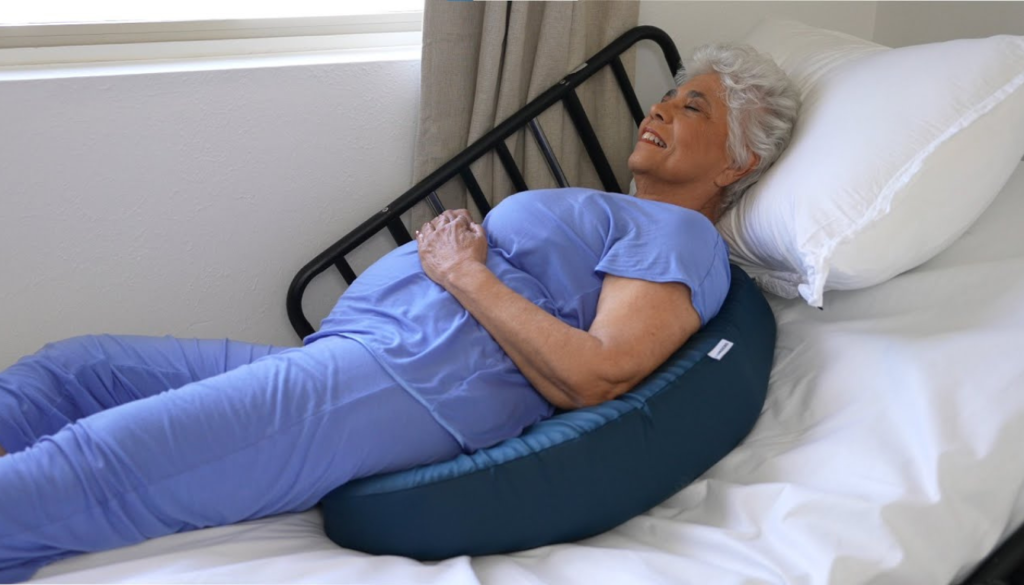Pressure sores on the buttocks can really mess up your day. The right support can make a big difference by evenly distributing your weight and reducing friction. This guide will help you find the best cushions for pressure sores on buttocks, promoting healing and keeping your skin healthy.
Key Takeaways
- Specialized cushions are critical for managing pressure sores and improving healing.
- Materials like memory foam and gel affect comfort and support effectiveness.
- Consulting medical experts ensures proper cushion selection.
- Regular maintenance extends cushion lifespan and maintains hygiene.
- Fit and design must align with individual mobility and seating needs.
Understanding Pressure Ulcers on the Buttocks
Pressure ulcers, also known as pressure sores, happen when too much pressure blocks blood flow to the skin. They often appear on the buttocks from sitting for too long. A pressure ulcer cushion is key in lowering risks by providing better support.
What Are Pressure Ulcers?
These injuries come in four stages:
- Stage 1: Skin reddens but stays intact.
- Stage 2: The outer skin layer breaks, forming shallow sores.
- Stage 3: Damage reaches deeper tissues, creating deeper wounds.
- Stage 4: Severe damage affecting muscles, bones, or joints.
Early care and preventive steps, like using a pressure ulcer cushion, can stop them from getting worse.
Risk Factors for Developing Pressure Sores
Key risks include:
- Prolonged sitting or wheelchair use
- Limited mobility
- Poor nutrition
- Diabetes or circulation issues
- Incontinence
Those at risk should use a pressure ulcer cushion. It helps reduce pressure points and aids in healing.
The Importance of Specialized Cushions for Pressure Sores
An ergonomic cushion is more than a seat. It’s a tool for health. These cushions spread out weight evenly, avoiding pressure on the skin. This is key for those at risk, as it can make a big difference between discomfort and relief.
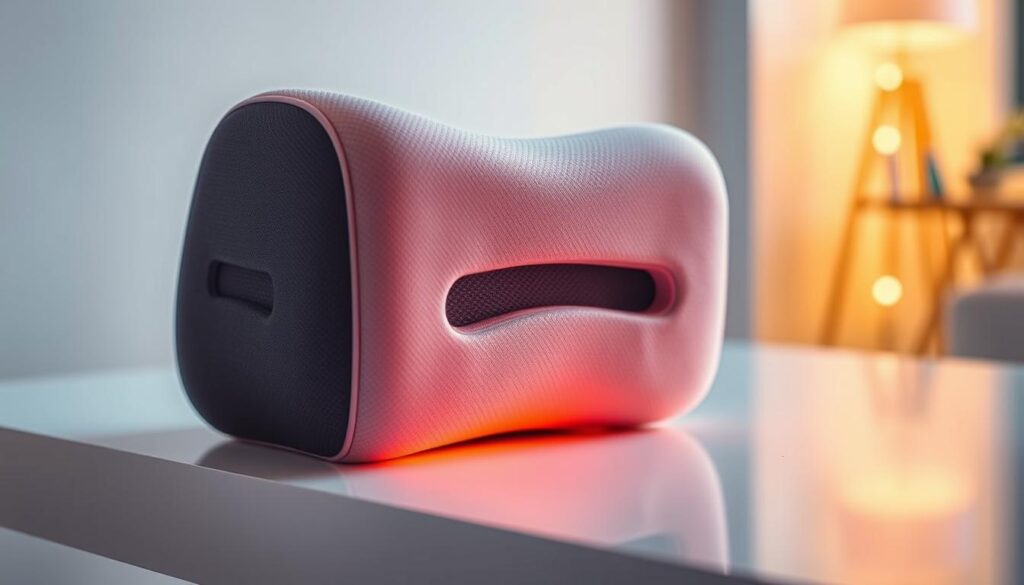
- Pressure relief: Contoured shapes and breathable materials lower the risk of skin breakdown.
- Posture support: Proper spinal alignment reduces strain during long sitting sessions.
- Lasting comfort: Quality foam or gel cores adapt to body movement without losing shape.
Studies show that using ergonomic cushions can reduce sores and improve mobility. Brands like ROHO and JAY® offer cushions with breathable covers and adjustable airflow. These features help keep skin dry, slowing bacterial growth and aiding in healing.
Doctors suggest using cushions along with regular repositioning. But the right cushion is essential, even with frequent movement. This is true for wheelchair users or office workers. Choosing a certified product ensures it meets clinical guidelines for wound care.
How to Choose the Best Cushions for Pressure Sores on Buttocks
Choosing the right medical cushion is important. You need to think about what you need and get advice from experts. Here’s a simple guide to help you pick the best cushion for your health.
Key Selection Criteria
- Material Quality: Choose breathable, antimicrobial materials to prevent friction.
- Pressure Distribution: Go for cushions with even support zones.
- Comfort: Look for lightweight cushions that are easy to move.
- Durability: Check if the cushion has a warranty and performs well over time.
Matching Cushion Features to Needs
Think about your daily activities and how you move. For example:
|
Activity Level |
|
Active users should choose cushions with adjustable firmness. |
|
Skin Sensitivity |
|
Choose hypoallergenic medical cushion covers. |
|
Surface Use |
|
Match cushion thickness to wheelchair or chair height. |
Consultation with Healthcare Professionals
Talk to a specialist about your medical history. They can suggest the right medical cushion for you.
Make sure the cushion fits your seating setup. Also, don’t forget to check in regularly for any needed adjustments.
Evaluating Cushion Materials for Comfort and Support
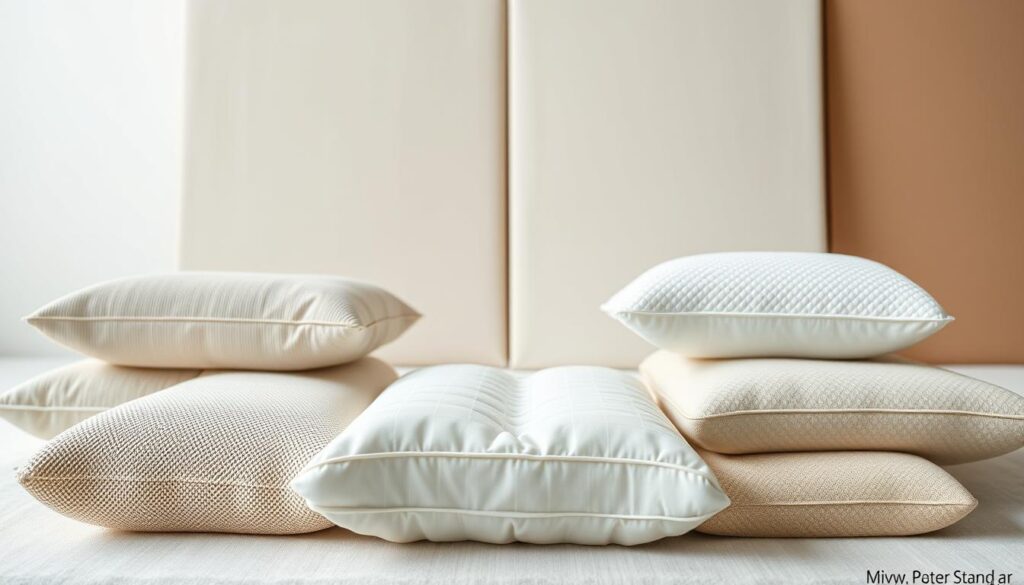
Choosing the right cushion material is key to comfort. Memory foam and gel-based options are top picks, each with its own perks.
Memory Foam vs. Gel Options
Memory foam cushions shape to your body, providing a perfect fit. They spread out pressure well but can get hot. Gel cushions, mixed with foam, stay cool thanks to their gel. Yet, they might not hug your body as closely.
- Memory foam: Softens pressure points with heat-sensitive material
- Gel: Adds airflow channels to reduce heat buildup
Breathability and Durability
Materials impact a cushion’s long-term comfort. Memory foam keeps its shape well but can be less breathable. Gel cushions focus on airflow but might not last as long in heavy use.
|
Material |
Support |
Breathability |
Durability |
|
Memory Foam |
Contoured pressure relief |
Low without airflow tech |
5+ years with care |
|
Gel |
Even weight distribution |
High with gel pockets |
3-4 years average |
Look for ISO 100 standards on labels for quality. Brands like ROHO and JAY Medical have breathable memory foam or gel cushions. Always test samples to feel the difference.
Proper Cushion Sizes and Shapes for Buttock Pressure Relief
Choosing the right size and shape is essential for pressure relief. A gel cushion that fits your body’s curves helps distribute weight evenly. This reduces discomfort and prevents pressure points.
Finding the Right Fit
- Measure your sitting area: Match cushion width and depth to your hips and thighs.
- Try seated trials: Test different shapes in stores or use virtual size guides.
- Consider activity level: Active users may need firmer, wider contours.
Importance of Ergonomic Design
Ergonomic gel cushion designs use tapered edges or segmented zones to reduce shear forces. Look for options with adjustable depth or modular sections. For example, some gel cushions feature tapered edges to avoid pressure on the tailbone.
“Ergonomics turn a cushion from a tool into a solution.”
Custom-fit options often combine gel with foam layers for tailored support. Always check if the shape allows for easy transfers in and out of chairs. Proper sizing prevents slippage and maintains posture throughout the day.
Adjustable shapes, like contoured gel inserts, let users fine-tune support. Prioritize cushions with adaptable features to match your body’s unique needs.
Cushion Design Features That Enhance Pressure Relief
Effective buttocks pressure relief starts with smart design. Modern cushions use innovative features to distribute weight evenly and reduce soreness. Key elements include contoured shapes, adaptive padding, and breathable materials.
- Contoured shapes mold to body curves, lifting sensitive areas away from hard surfaces.
- Adaptive padding layers materials like gel or memory foam to shift pressure points.
- Breathable fabrics prevent heat buildup, keeping skin dry and reducing irritation.
“A well-designed cushion should act like a second skin, adapting to movement while maintaining support.” — Dr. Laura Chen, Physical Therapist
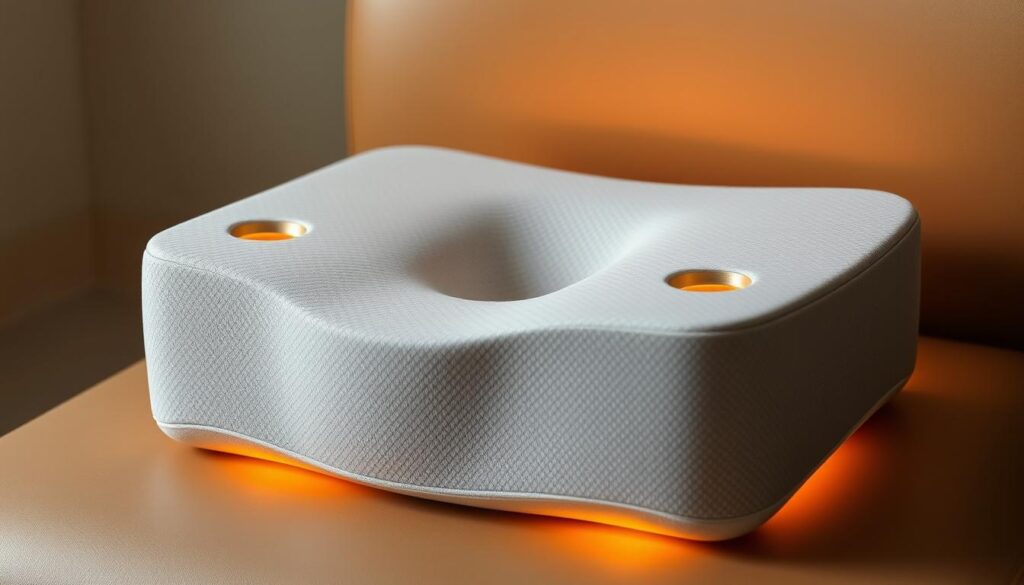
Look for designs with multi-density foam zones. These zones target high-pressure areas while leaving space for air circulation. Adjustable straps or Velcro fasteners let users personalize fit without compromising support. Brands like ROHO and JAY Medical offer models with these features, proven in clinical settings to reduce shear forces.
Regularly check cushion alignment during use to ensure even weight distribution. Small details like tapered edges or anti-slip bases also play a role in long-term buttocks pressure relief. Prioritizing these elements ensures comfort without sacrificing functionality.
Step-by-Step Guide to Cushion Installation and Use
Maximizing pressure sore prevention starts with setting up your cushion right. Follow this guide to make sure your cushion works well for everyday use.
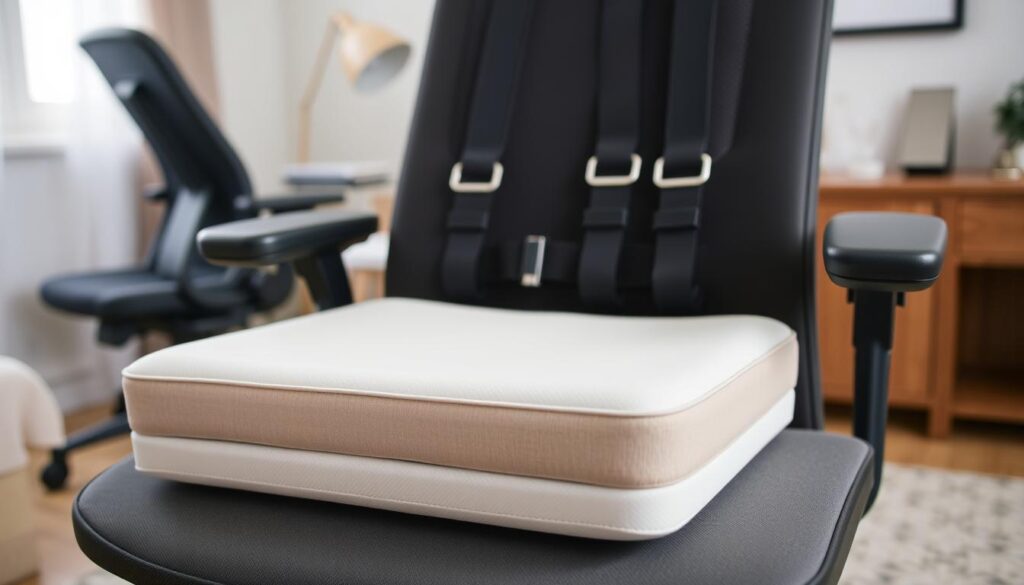
First, get your seating area ready to boost cushion performance. These steps make it easy to fit into your daily routine and lower risks.
Preparing the Surface
- Wipe surfaces clean to remove dust or debris before placing the cushion.
- Ensure the seating area is level to maintain even weight distribution.
- Avoid placing cushions on uneven floors or unstable furniture.
Positioning Techniques
- Sit slowly, centering hips over the cushion’s core support zone.
- Keep feet flat on the floor to maintain spinal alignment.
- Adjust cushion height if thighs slope slightly downward from hips.
“Consistent positioning minimizes pressure points over time.” – Rehabilitation Therapy Standards
Initial Adjustment Period
Give yourself 1–2 weeks to get used to it. Start with 30-minute sessions, then add 10–15 minutes each day. If you feel uncomfortable after 20 minutes, it might be set up wrong.
Move every hour to prevent pressure sores, even with the best cushions. Also, check your skin for redness or irritation regularly.
Integrating Cushions into Daily Routines for Optimal Benefit
Make the durable cushion a daily part of your life for lasting relief. Use it during meals, work, and when relaxing. This habit helps stop pressure sores from coming back.
- At home: Place the cushion on chairs, couches, and even car seats.
- At work: Pair with ergonomic desks to maintain posture during long hours.
- On trips: Pack a lightweight durable cushion for planes, trains, or road trips.
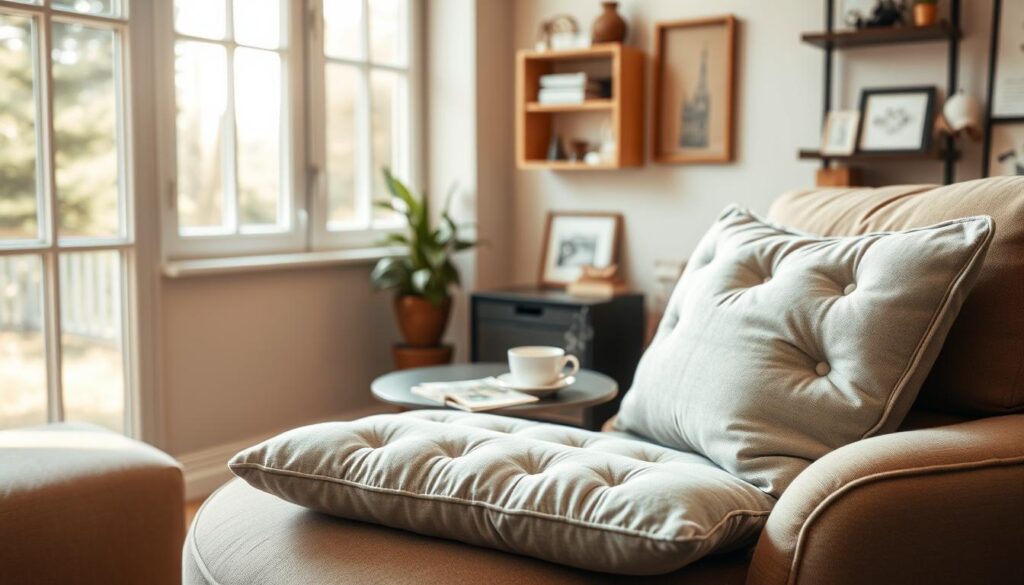
A good cushion fits every situation. Here’s how to get the most out of it:
|
Activity |
How to Use |
Benefit |
|
Sitting |
Always place cushion between seat and body |
Maintains even pressure distribution |
|
Commute |
Use in vehicles for trips over 30 minutes |
Reduces shear forces on skin |
|
Travel |
Pack a compact durable cushion for seating |
Prevents sores during long stays seated |
Don’t forget to check in with your healthcare provider regularly. This ensures the durable cushion keeps meeting your needs. Small changes can lead to big improvements in comfort.
Expert Tips on Cushion Maintenance and Hygiene
Keeping your cushion clean and fresh is key to its longevity. A breathable cushion needs special care to stay hygienic and effective. Here are some tips to protect your investment and health.
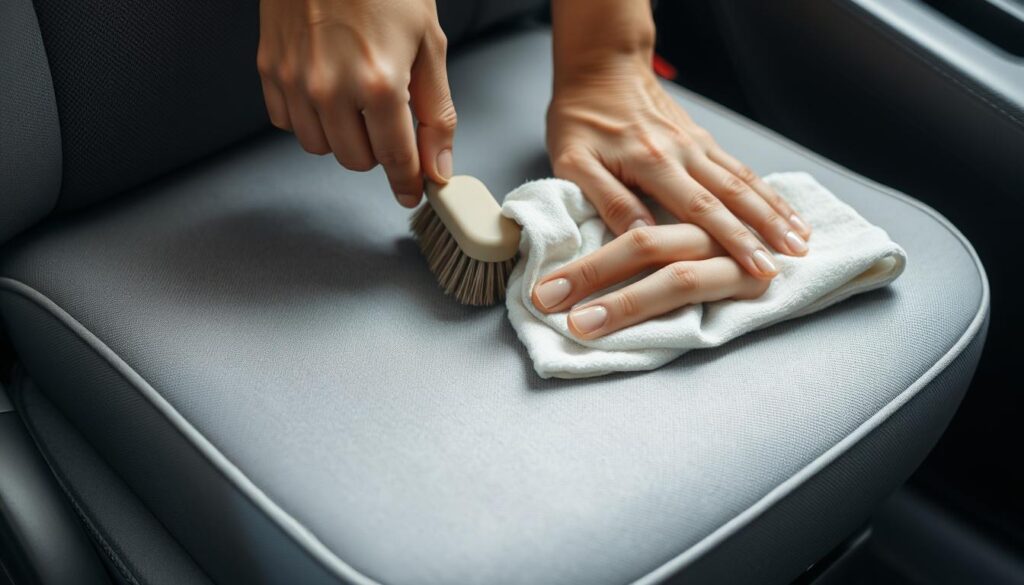
Cleaning and Care Instructions
- Always check the manufacturer’s guidelines first.
- Spot clean spills with mild soap and water. Wipe gently on breathable cushion surfaces.
- Air-dry completely after cleaning to avoid mold growth.
- Avoid bleach or abrasive tools that damage materials.
Extending Cushion Lifespan
|
Tip |
Why It Works |
|
Wash weekly with mild detergent |
Removes sweat and oils |
|
Rotate cushion weekly |
Even wear on breathable fabrics |
|
Store in a cool, dry place |
Prevents mildew and damage |
Regular checks for tears or stains help catch issues early. Never leave cushions in direct sunlight, as heat harms breathable materials. Follow these steps to keep your cushion working well for years.
User Reviews: Real-Life Experiences with Pressure Sores Cushions
Real-world experiences show how cushion design affects daily comfort. Many users love the ROHO Gel Cushion for less pain during long sits. Others prefer the JAY J2 for steady support. They often talk about how breathable and easy to clean they are.
“The honeycomb air cells in my ROHO cushion made a huge difference. It’s lightweight and molds to my shape without getting hot.” – Sarah T., 45
Feedback often talks about:
- Love for customizable cushion designs that adjust to body weight
- Concerns about durability in high-use settings like offices or wheelchairs
- Appreciation for washable covers that simplify maintenance
Some users say poorly fitted cushions cause shifting or uneven pressure. They suggest trying different types to find the right fit. For example, one person found a contoured cushion from Drive Medical helped their posture and reduced soreness after six months.
Feedback also highlights the need for cushion design and regular repositioning. Even the best cushions need proper care to prevent skin breakdown. Healthcare providers often suggest combining these reviews with professional advice for the best choices.
Comparative Analysis of Top Cushions for Pressure Sores
Choosing the right cushion is about looking at features, what others say, and cushion maintenance. Here’s a simple guide to help you decide.
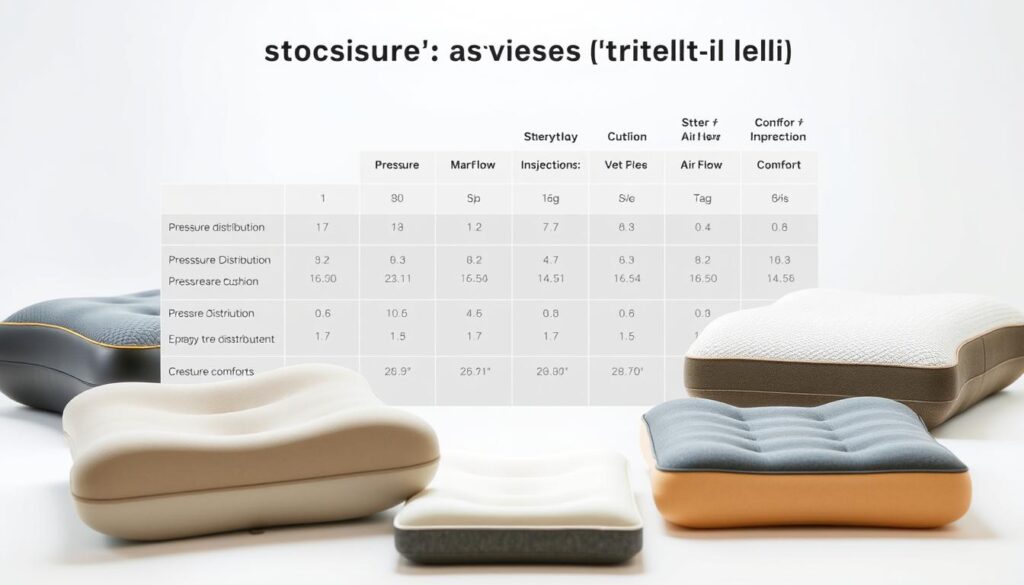
|
Brand |
Material |
Pressure Relief |
Cushion Maintenance |
User Rating |
|
ROHO Valuation Plus |
Air cells |
Adjustable air pressure |
Hand-washable covers |
4.7/5 |
|
JAY J2 Gel |
Gel-infused foam |
Contouring support |
Spot cleaning only |
4.5/5 |
|
Medline Flexamat |
High-density foam |
Static support |
Machine-washable |
4.3/5 |
Feature Comparison
Air-based cushions like ROHO need regular pressure checks. They let you adjust cushion maintenance to your liking. Gel cushions, like JAY J2, offer comfort but cleaning can be tricky.
User Ratings and Feedback
- ROHO gets praise for lasting long and being easy to clean
- JAY J2 gets criticism for gel that can move over time
- Medline Flexamat is liked for its simple design
Pros and Cons
ROHO needs regular checks but lasts a long time. JAY J2’s gel helps reduce pressure but cleaning is harder. Medline’s foam is cheaper but less flexible.
“The Medline cover is easy to remove and clean—perfect for my busy schedule.” – Sarah T., verified reviewer
Choosing the right cushion means matching its features to your needs. Always follow the maker’s cushion maintenance tips to get the most out of it.
Budget-Friendly Options and Investing in Quality Cushions
Choosing between budget-friendly pressure sores cushions and premium options depends on your needs and budget. While cost is important, long-term comfort and durability matter most. Let’s explore how to find value without overspending.
Budget Picks That Work:
- ROHO Visco Gel Cushion: Lightweight and affordable, great for short-term use.
- Drive Medical Gel Cushion: Durable basic design at an entry-level price.
- Medline Alternating Air Cushion: Budget option for those needing air-based support.

Premium cushions like the JAY J2 Cushion or DonJoy Rebound may cost more upfront but last longer and reduce skin breakdown risks. Look for materials like high-density foam or adaptive gel that maintain support over years.
“I saved money buying a budget cushion, but replacing it every 6 months added up. Switching to a JAY J2 cut costs long-term.” – Sarah, user review
Ask questions: How often will you use it? Do you need extra durability? Compare quality cushions for pressure relief with features like antimicrobial covers or adjustable airflow. Sales, insurance coverage, or medical discounts can lower upfront costs.
Balance price with your health. A well-made cushion protects skin and mobility goals, saving money on medical care down the line.
Addressing Common Concerns about Cushion Durability
Choosing the right pressure sore cushion is more than just about feeling good. It’s also about how long it lasts. Many people wonder if cushions can handle daily use. Let’s look at what affects how long they last and how to make them last longer.
- How long do pressure relief cushions typically last? Most high-quality options, like those from ROHO or JAY Medical, last 2–5 years with proper care.
- What causes premature wear? Overweight users or improper cleaning can weaken materials faster.
- Can I repair worn-out parts? Some brands offer replacement covers, like Drive Medical’s modular designs.
|
Factor |
Impact on Durability |
|
Material Quality |
Memory foam holds shape longer than low-density foam |
|
Weight Capacity |
Cushions rated for higher weights resist deformation |
|
Cleaning Practices |
Following brand-specific care guides prevents damage |
|
Storage |
Avoiding extreme heat extends lifespan |
“Regular inspection of seams and padding integrity is key to catching wear early.” – Dr. Linda Carter, Wound Care Specialist
Regular checks and following the manufacturer’s guidelines are important. Avoid direct sunlight and sharp objects. Remember, spending more on durable materials can save money in the long run.
Customizing Cushion Use for Different Activities and Settings
Pressure sores cushions aren’t made for everyone. Making them fit your daily life boosts comfort and safety. Adjustments for sitting at a desk, traveling, or hobbies can greatly improve your experience.
Tailoring Cushions for Work and Leisure
- Desk work: Use memory foam cushions like ROHO or JAY with cutouts to reduce pressure during long hours.
- Car rides: Opt for gel-based seats that mold to body heat, such as Med , for added comfort on trips.
- Hobbies: Lightweight options like the Drive Medical cushion pair well with outdoor activities.
Adapting Cushions for Mobility Needs
Those with mobility issues need flexible solutions. Wheelchair users might prefer dynamic seating systems. Travelers should look for cushions that fit car seats or airplanes. Always check cushion portability ratings before buying.
“Adjusting cushion firmness and shape based on activity keeps pressure sores at bay,” says a 2023 study in the Journal of Rehabilitation Medicine.
Custom cushion solutions are best when they match your lifestyle. Try different materials and designs to find what works for you. Even small changes can help avoid bigger problems later.
Conclusion
Choosing the right pressure relief cushion for buttock sores starts with knowing what you need. Materials like memory foam and ergonomic shapes help spread out pressure. This reduces the risk of sore spots.
Keeping your cushion in good shape is key to its effectiveness. Also, talking to healthcare experts ensures you get the right cushion for your health. These steps are important for avoiding ulcers and making daily life more comfortable.
Look for cushions that offer both support and air flow. Choose ones that fit your lifestyle and how active you are. Quality materials, a proper fit, and good care routines are essential for healing and staying mobile.
Your health and comfort depend on making smart choices. Look for solutions that meet your specific needs today.
FAQ
What are the best cushions for pressure sores on the buttocks?
The top cushions for pressure sores are made from materials like memory foam or gel. They’re designed to reduce pressure and increase comfort. Look for ones that offer ergonomic support and are approved by healthcare experts.
How can I prevent pressure sores while sitting for long periods?
To avoid pressure sores, use a cushion designed to relieve pressure. Change your sitting position often and take breaks to stand or move. Keeping your skin clean and dry is also key.
What factors should I consider when choosing a cushion?
Consider the cushion’s material, size, shape, and pressure relief features. It’s smart to talk to healthcare providers for advice that fits your needs.
How do I properly maintain my cushion for longevity?
Clean your cushion regularly and follow the care instructions from the maker. Check it often for wear and tear. This helps it last longer and keep providing relief.
Are there cushions designed for different activities?
Yes, there are cushions for work, travel, and leisure. Each is made to offer comfort and support for your lifestyle and needs.
Can I use cushions in my wheelchair?
Absolutely! There are wheelchair cushions that can make sitting more comfortable and prevent pressure sores. Make sure the cushion fits your wheelchair and supports your body well.
How do I know if my cushion is the right size for me?
Your cushion should fully support your body without gaps. Your thighs should rest comfortably, and your hips should be supported. Use sizing guides or get advice from professionals for the best fit.

